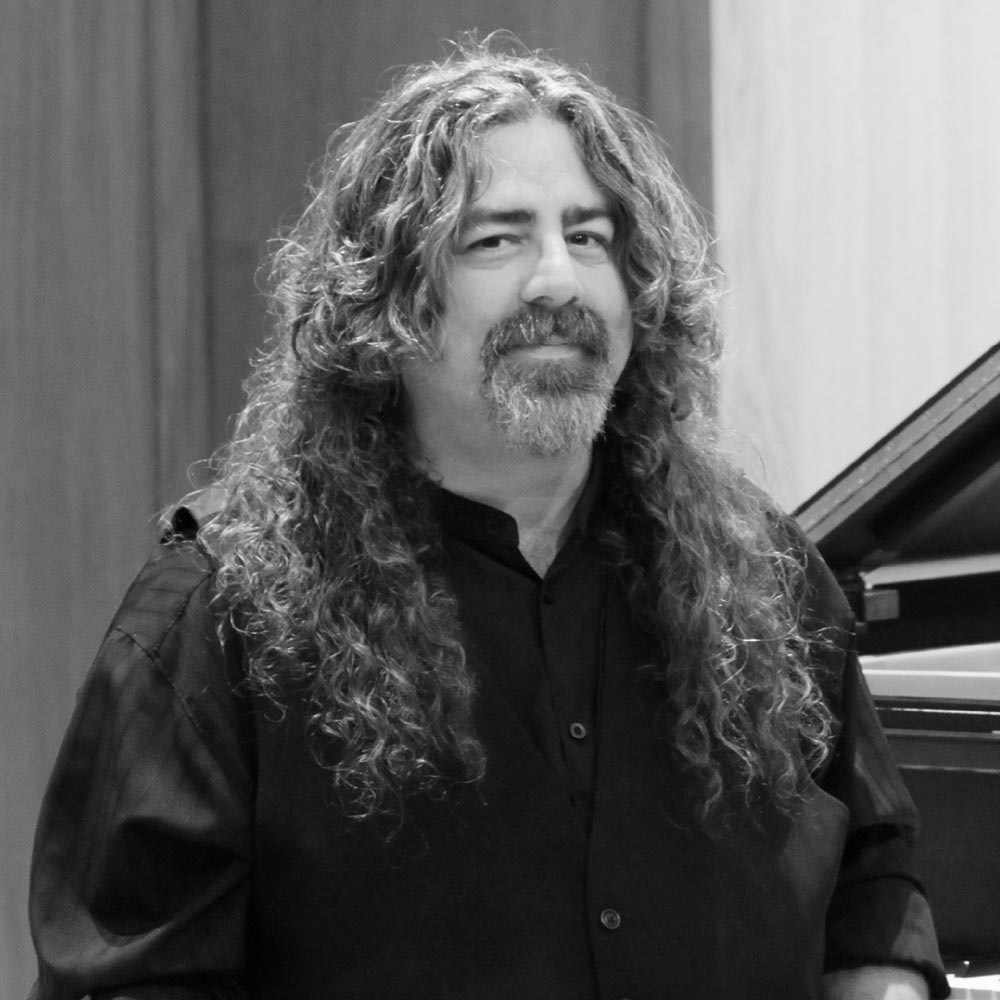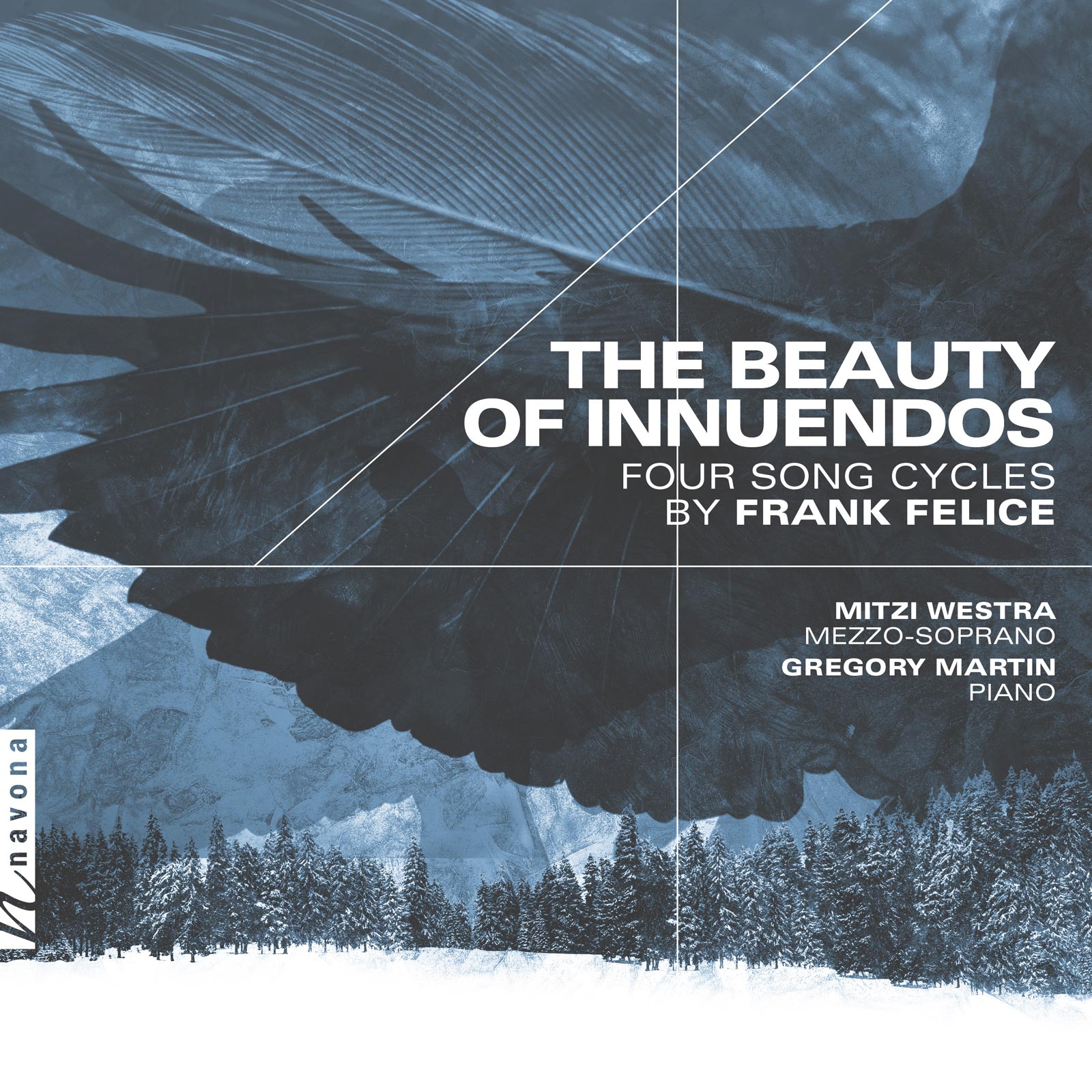
Frank Felice, an eclectic composer celebrated for his postmodern mischievousness, explores his own brand of “consonant adiatonicism” in THE BEAUTY OF INNUENDOS. Throughout the album, Felice sets a variety of texts to music, ranging from the antiphons of 9th century Christian mystic Hildegard of Bingen to the modernist poetry of Wallace Stevens. Felice’s compositions explore the given text while also demonstrating the virtuosic skill of the singer and the pianist; the latter, far from a mere accompaniment, joins with the voices equally to lend even great profundity to the poetic text.
Today, Frank is our featured artist in “The Inside Story,” a blog series exploring the inner workings and personalities of our composers and performers. Read on to learn about his appreciation for numerous musical genres, and his wide array of passions outside of composition…
What advice do you have for young musicians?
For composers: do not be afraid of hard work and a disciplined approach to this craft — there are many days when you have no ideas or you really dislike the idea you DO have, but those who continue to work on the music, molding, shaping, erasing, trying new approaches regardless of how they feel in that moment will find success. It may come in ways you would have never suspected, but it will come. I also like to remind my students that the computer, the pencil, or the piano is not the primary mechanism for composing, those are only assisting tools. Music is made by your brain and can be made without a computer.
If we looked through your music library, what would we be surprised to find?
Two things: nearly every recording made by the Tallis Scholars, and a very large collection of progressive rock music including discs by Camel, Renaissance, Gentle Giant, Focus, They Came from Space, as well as rarities by Rush, Kansas, Pink Floyd, Genesis, Spock’s Beard, et al.
Do you have any specific hopes about what this album will mean to listeners?
THE BEAUTY OF INNUENDOS was recorded and released to show an overview of how I’ve composed art song for mezzo-soprano over the years — since I married an excellent light, lyric mezzo-soprano, it was always designed to be a vehicle for my wife, Mitzi Westra to showcase her abilities as an interpreter of these pieces. My hope is that listeners will become intimates of our musical work, as well as the stories and narratives of the poets. Those who have heard the music on this album in concert settings have nearly all commented on how they’re drawn into the music, and others who have listened to the record in more intimate settings (home alone, in the car driving long distances, etc.) have made similar statements connecting strongly with all who made the record.
How have your influences changed as you grow as a musician?
They have become both more opinionated and more diverse — when I was in grade school I loved Scott Joplin and a lot of hymns from my church. I fell in love with renaissance choral music, blues-based rock and John Williams in high school. In college, so much Bach and Debussy captured my attention, while prog rock and jazz also pulled me every which way. I discovered Stravinsky, Cage, Crumb, Lutoslawski, and Machaut. I disliked minimalism until Terry Riley and John Adams (incl. John Luther) taught me to love it. I disliked country music until I heard Lyle Lovett, Bela Fleck, and the Punch Brothers, and still dislike disco (although playing bass on Disco Inferno is a hoot). The playfulness of Caroline Shaw is great fun, and the prickly virtuosity of Ornette Coleman is excellent. Hip hop was fun when it was a street party, not so fun when it was gangsta, but is now moving into some cool sophisticated stuff with Kendrick Lamar. And prog rock is going strong with Bent Knee and the Neal Morse Band. I’ll always love Debussy. And Mahler. And Rush. And Josquin De Prez. And Don Davis. And Bach……
Where and when are you at your most creative?
This varies all of the time — often, an idea can just spring to mind sparked by the situation I’m in which might be comic and then the idea goes “what would happen if I did THIS… no, you can’t do that! Well…… why not! Might be silly to do that.” All too often these ideas spring up in the middle of a concert, and of course you try to remember them, writing bits of prose on concert programs about your piece, rather than hearing the work that’s in concert!
Often the best time I can actively think and work on music is when I’m driving long distances, trapped alone in the car. Much easier to work through the whole of the piece, imagining myself as a listener, and working out the topography, form, and textures, as well as a general sense of notes. Then, when I return to my studio, I can easily work on pitch material, because so much of the other parts have been thought through.
What are your other passions besides music?
There are so many! Cooking, poetry, painting (mostly watercolor), baking, Christian theology, history, paleontology (vertebrate, mostly Mesozoic), travel, Egyptology, reading, film, model railroading, and basketball, to name a few.
Who are your musical mentors?
All of my teachers from times past: Virginia Vinal, Scott Southwick, J. Robert Hanson, Daniel Breedon, Thomas Richmond, Luiz Gonzalez, Richard Toensing, James Day, Michael Schelle, Alex Lubet, Dominick Argento, Lloyd Ultan, and Judith Zaimont.
Nowadays I very much look to a number of colleagues such as Frank La Rocca, Christopher Gable, Michael Wittgraf, as well as performers such as wife Mitzi Westra, whose musical suggestions are incredibly valuable.

Frank Felice (b. 1961) is an eclectic composer who writes with a postmodern mischievousness: each piece speaks in its own language, and his works can be by turns comedic/ironic, simple/complex, subtle/startling, or humble/reverent. Recent projects of Felice’s have taken a turn toward the sweeter side, exploring a consonant adiatonicism.

